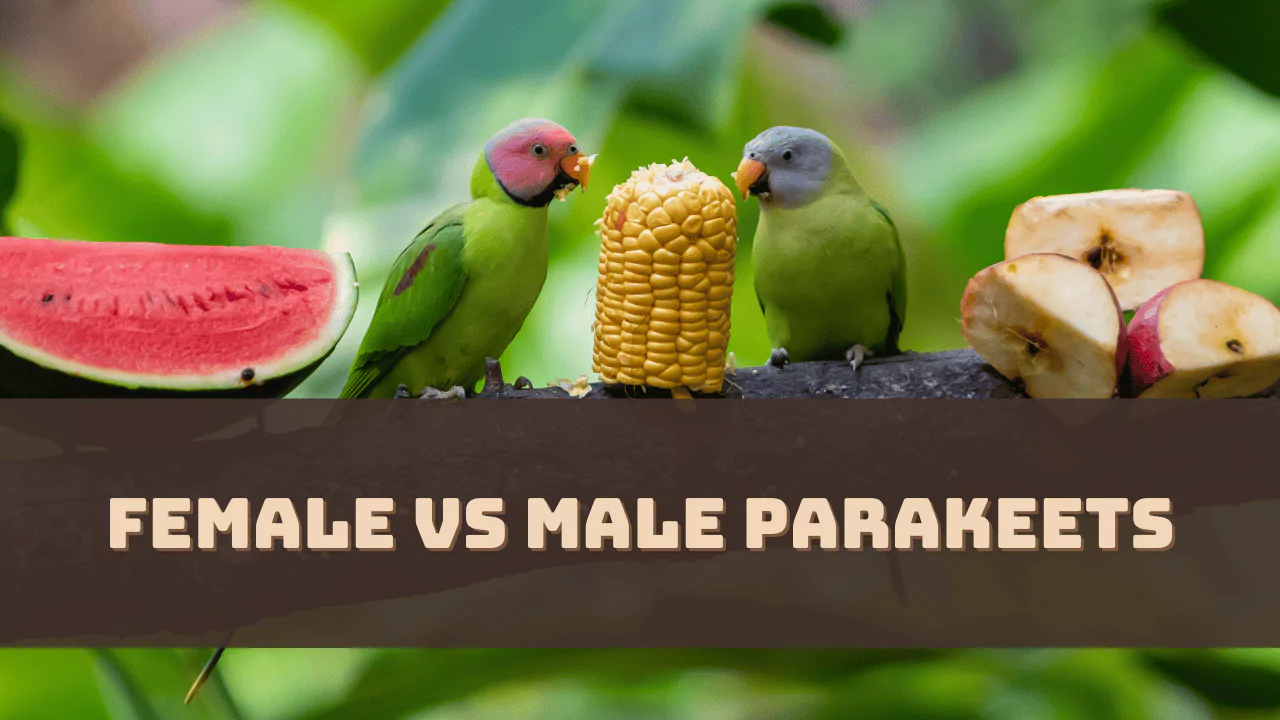If you want to differentiate between a female and a male parakeet, then you need to pay attention to their behavior, color, and vocalization. They might look similar, and it is quite easy to get confused, so you need to look up close to identify the genders. There are many significant differences among the male and female parakeets.
Let’s get to know more about the criteria that can help you differentiate between a male and a female parakeet.
6 Criteria to Determine the Difference Between a Female and Male Parakeet
To get foolproof of the gender of a parakeet, you can conduct a DNA test on their blood or feathers, otherwise, these physical and behavioral attributes can help you out.
Size
The female parakeets are smaller in size when compared with their male counterparts. The female parakeet weighs 1.1 ounces, while the male parakeet weighs 1.4 ounces.
Vocalization
The male parakeets are more vocal when compared with female parakeets. A female parakeet on the other hand tends to make less noise and is usually heard making the same call. Their voices seem to be fussy and excited. However, male parakeets make different vocalizations and are also able to mimic many other sounds. The males also have the capability to mimic human speech.
Behavior
The male parakeets are not as quiet as the female parakeets. The male birds are quite playful and energetic and you can also find them head bobbing or flicking their wings. On the other hand, the female parakeets are not easy to handle; they are aggressive and territorial. The female parakeet shows more protective behavior, trying to safeguard their offspring, nesting boxes, or eggs. The female parakeets might not seem to be as happy as the males when you are handling them.
Body Color
Both the male and female versions of the parakeet have vibrant feathers and their gender can be distinguished by determining the color difference. The male parakeets are seen to have green blue vibrant colored feathers on the head and also on the wings, but the females have a muted or dull version of the same color. You can also find that the males have blue legs while the females have brown legs with a pink tint.
Ceres Colour
The color of the ceres, which is the skin above the beak, that’s around the nasal opening, tends to vary in color and it gets well-defined after the parakeet reaches one year of age. The ceres also become more vibrant during the mating season. When the parakeets are juvenile both the male and female have light pink color ceres. However, adult female parakeets have white and brown ceres and occasionally you may find lavender hue feathers on them. On the other hand, male parakeets have purple to yellow colored ceres. There is also an exception, as the color of the ceres for the female, also depends on their age and hormones
Nesting Responsibilities
The responsibility of nesting for the parakeets living in the wild is on the female’s part whose duty is to incubate the egg while on the other hand, the male’s duty is to gather food. The parakeet egg hatches once per day and so the first egg typically hatches after 16 to 20 days of egg laying. The parakeet chicks do not have feathers and the nourishment comes from the fluid produced by the female crop. Later, after 3 weeks, the male’s duty is to feed the chicks directly. You can find various sizes of chicks in the parakeet nest as one egg hatches at a time, which also increases the survival chance of the young.
At What Age Can You Determine the Gender of a Parakeet?
When the parakeet reaches 2 to 3 weeks old, then you can identify the gender of the parakeet.
How to Understand the Gender of a Juvenile Parakeet?
It becomes too difficult to identify the gender of a Juvenile or young parakeet as both male and female appear identical in their early stages of life. It also becomes difficult to differentiate them as they show the same physical characteristics, but as these birds mature the signs and gender indications become prominent. Males and females both show different hues in terms of colors and pattern, but often due to color mutation, it becomes difficult to identify between a male and a female parakeet.




